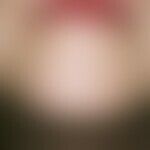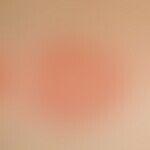Synonym(s)
HistoryThis section has been translated automatically.
DefinitionThis section has been translated automatically.
Highly contagious, non-abscessing folliculitis caused by microsporum species.
Among the proven cases of dermatomycoses, the proportion of infections caused by microsporum species is about 4% (Heidrich D et al. 2015)
The capillitium (tinea capitis) is preferably infested by children or young people.
Infestation of the entire integument(Tinea corporis) possible (but rare)
In tinea capitis about 50% of cases are caused by microsporum species .
You might also be interested in
PathogenThis section has been translated automatically.
M. canis (zoophilic, carriers are mainly cats; Nardoni S et al. 2015), M . audouinii (anthropophilic); M . gypseum (geophilic)
Occurrence/EpidemiologyThis section has been translated automatically.
The zoophilic M. canis often spreads endemically in kindergartens and schools. Direct physical contact or transmission through infected objects.
EtiopathogenesisThis section has been translated automatically.
ManifestationThis section has been translated automatically.
Almost exclusively children and adolescents are affected (close contact with infected "cuddly toys").
ClinicThis section has been translated automatically.
Capillitium: Initially multiple, small, pityriasiform scaling, slow-growing, confluent to polycyclically limited areas with hairs broken off just above the scalp (comparison with a badly mowed meadow).
Face, neck, trunk and extremities: Anular, light red to deep red, bordered, Collerette-like scaly plaques. In most cases there is clear itching.
Diagnosis: Pathogen detection in the native preparation and in culture, green fluorescence in wood light.
Differential diagnosisThis section has been translated automatically.
External therapyThis section has been translated automatically.
Broad-spectrum antifungals such as bifonazole (e.g. Mycospor cream) or ciclopirox (e.g. Ciclopoli®).
Source of infection: Find infected animal (cat, dog) and have it treated by veterinarian.
Internal therapyThis section has been translated automatically.
- Fluconazole (1mg/kgkgKG p.o.): To prevent recurrences, the treatment period should extend beyond the healing period and may take several months if severe.
- Alternative: Itraconazole (e.g. Sempera Kps.) 100 mg/day show good results in individual case reports, but the active substance is not yet approved for children due to lack of experience.
- Alternative: Ketoconazole
- Alternative: Griseofulvin (e.g. Likuden), adults 500-1000 mg/day, children 6-7 mg/kg bw/day.
Progression/forecastThis section has been translated automatically.
Phytotherapy externalThis section has been translated automatically.
An herbal mixture of different oils: Litsea cubeba (1%), Illicium verum (0.5%), Foeniculum vulgare (0.5%), and Pelargonium graveolens (0.5%) showed antifungal activity against M. canis arthrospores (Nardoni S et al. 2015).
Note(s)This section has been translated automatically.
The term "microsporum" has become established colloquially as a designation for a specific pathogen (analogous to "trichophytosis"). However, the respective clinical picture caused by microsporum species, e.g. in the case of infestation of the capillitium, is referred to as tinea, e.g. tinea capitis.
LiteratureThis section has been translated automatically.
- Bender TW 3rd (2002) Cutaneous manifestations of disease in athletes. Skinmed 1: 107-114
- Degreef HJ et al (1994) Current therapy of dermatophytosis. J Am Acad Dermatol 31: S25-S30
- Duek L et al (2004) The pathogenesis of dermatophyte infections in human skin sections. J Infect 48: 175-180
- Guidelines/Outcomes Committee (1996) Guidelines of care for superficial mycotic infections of the skin: Tinea capitis and tinea barbae. J Am Acad Dermatol 34: 290-294
- Gruby D (1841) Mémoire sur une végetátion qui constitue la vraie teigne. Comptes Rendus Acad Scien (Paris) 13: 72-75
- Gruby D (1842) Sur un nouveau crytogame qui se développe dans la racine des poils de la barbae et constitue une espèce de mentagre contagieuse. Comptes Rendus Acad Scien (Paris) 15: 512-513
- Heidrich D et al(2015) Dermatophytosis: a 16-year retrospective study in a metropolitan area in southern Brazil
. J Infect Dev Ctries. 2015 9: 865-871 - Kriegesmann I et al (1990) Exanthematic microsphere. Act Dermatol 16: 321-322
- Nardoni S et al (2015) Susceptibility of Microsporum canis arthrospores to a mixture of chemically defined
essential oils: a perspective for environmental decontamination. Z Natural Research C J Biosci 70(1-2):15-24. - Sabouraud RJA (1894) Les trychophyties humaines. Rueff et cie, Paris
Incoming links (15)
Gruby, david; Gruby's disease; Hypotrichosis; Microsporide; Microsporum; Microsporum audouinii; Microsporum canis; Microsporum gypseum; Mycoses; Porrigo decalvans; ... Show allOutgoing links (16)
Dermatomycoses; Fluconazole; Griseofulvin; Itraconazole; Ketoconazole; Microsporum; Microsporum audouinii; Microsporum gypseum; Pityriasis rosea; Psoriasis (Übersicht); ... Show allDisclaimer
Please ask your physician for a reliable diagnosis. This website is only meant as a reference.

















